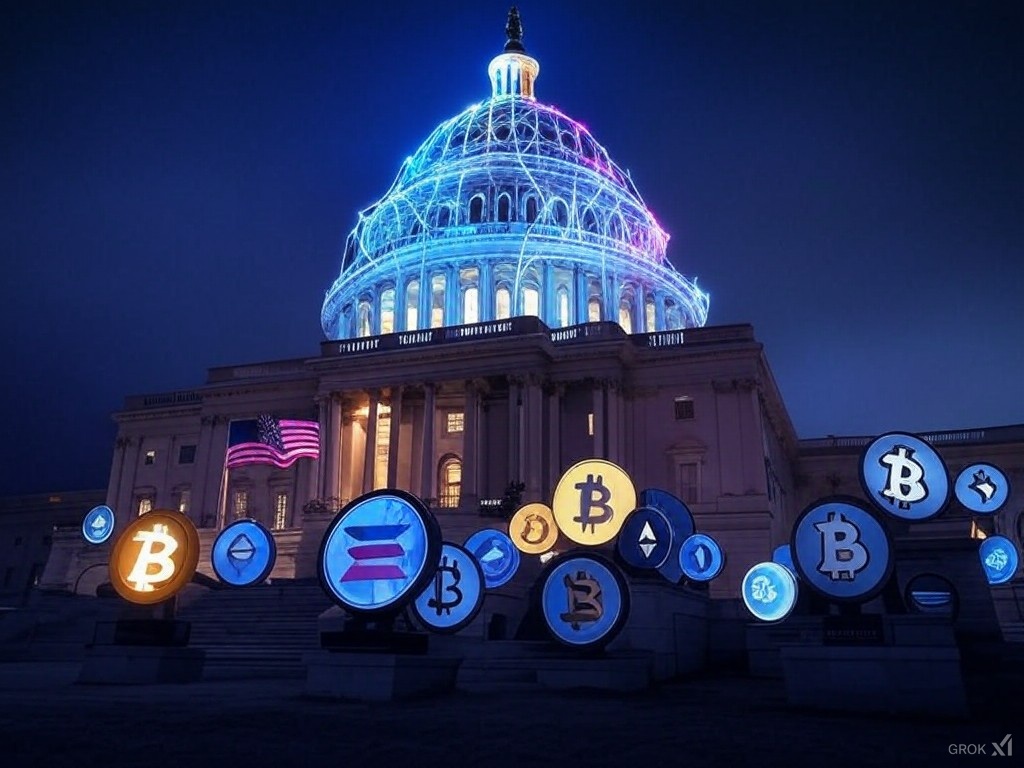Trump’s Crypto Regulation Overhaul: A Week That Changed the Industry

“There are decades where nothing happens, and there are weeks where decades happen.” Though often misattributed to Lenin, this quote perfectly encapsulates the monumental shifts in U.S. crypto policy over the past week. The implications for the future of cryptocurrency are profound, signaling a clear direction in national strategy and global competitiveness.
Key Highlights from the Week
Executive Order: The Crypto Landscape Redefined
President Donald Trump signed a landmark executive order that introduces sweeping changes to the U.S. crypto ecosystem. The key provisions include:
- Creation of a National Crypto Stockpile: A bold move to establish reserves of strategic digital assets, aimed at fortifying national security and financial sovereignty.
- Ban on CBDCs: The order explicitly prohibits the development and use of Central Bank Digital Currencies (CBDCs), citing concerns over privacy and government overreach.
- Formation of a “Working Group on Digital Asset Markets”: This task force, led by Cabinet officials and advisors like crypto and AI expert David Sacks, has 180 days to propose a comprehensive regulatory framework for digital assets, including stablecoins.
Regulatory Relief for Wall Street and DeFi
Two major developments reflect the administration’s commitment to fostering a crypto-friendly environment:
- SEC Rescinds SAB 121: This accounting guidance previously required banks to include crypto holdings on their balance sheets, deterring institutional involvement. Its revocation paves the way for banks to expand crypto services, potentially fueling a $16 trillion tokenization market by 2030.
- Proposed Bill to Overturn DeFi Broker Rules: A Republican-led bill aims to scrap regulations classifying DeFi platforms as brokers, which would have imposed onerous Know Your Customer (KYC) and tax compliance requirements.
Leadership Shakeups and Policy Reorientation
The departure of SEC Chairman Gary Gensler marked a significant shift, with pro-crypto Commissioner Mark Uyeda stepping in as Acting Chair. Uyeda promptly appointed Hester Peirce, dubbed “Crypto Mom,” to head a task force dedicated to formulating clear and supportive crypto regulations.
Industry Implications
A Win for Crypto Innovation
Trump’s executive order and subsequent regulatory actions highlight the administration’s intent to position the U.S. as a global leader in digital assets. By rejecting CBDCs and focusing on fostering private-sector innovation, the government has sent a strong signal that it values decentralized technologies over state-controlled alternatives.
Challenges for DeFi and Smaller Players
While regulatory clarity benefits institutional players, smaller DeFi platforms may still struggle with the broader regulatory environment. For example:
- DeFi Websites: The proposed bill overturning the “broker” classification is promising, but many platforms remain wary of future compliance obligations.
- New Entrants: The fast-paced changes may deter startups unfamiliar with the evolving legal framework.
Pardon and Political Tokens
Trump’s pardon of Ross Ulbricht, the controversial Silk Road founder, underscores the administration’s libertarian undertones. Meanwhile, the launch of the $TRUMP token has sparked debates about political memecoins, though on-chain adoption remains limited, with most holders possessing under $100 worth of the token.
What’s Next?
- Legislative Debates: Upcoming Senate hearings, including one on February 5 regarding crypto debanking, will shed light on lawmakers’ stance.
- Potential Market Rebound: The removal of regulatory roadblocks could ignite interest among institutional investors, driving innovation and adoption.
- Global Implications: The U.S. policy shift may prompt other countries to reevaluate their crypto strategies, intensifying the global race for digital asset leadership.
Final Thoughts
The U.S. has taken a bold step in embracing crypto, with policies that could reshape the industry’s future. These developments mark not just regulatory progress but also a declaration of intent: the U.S. wants to lead the digital revolution. For investors, innovators, and enthusiasts, it’s a time to watch closely—and act decisively.
